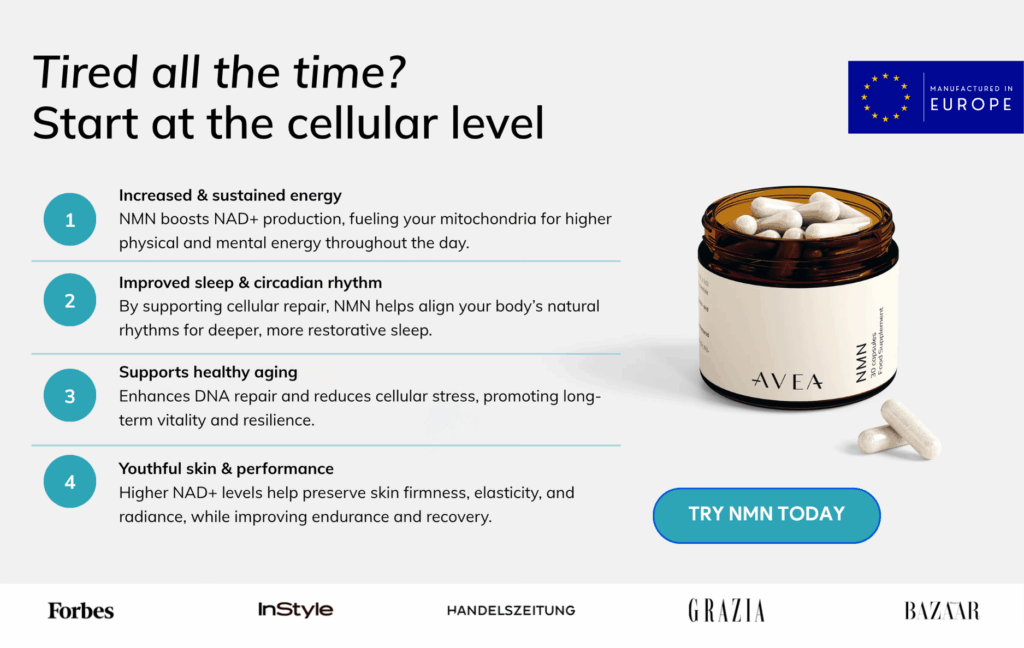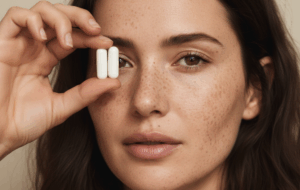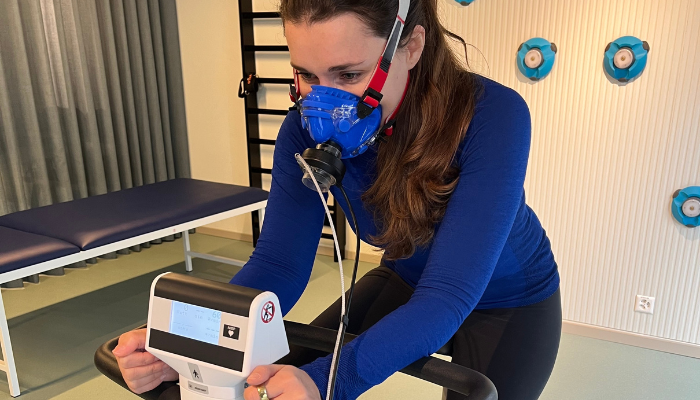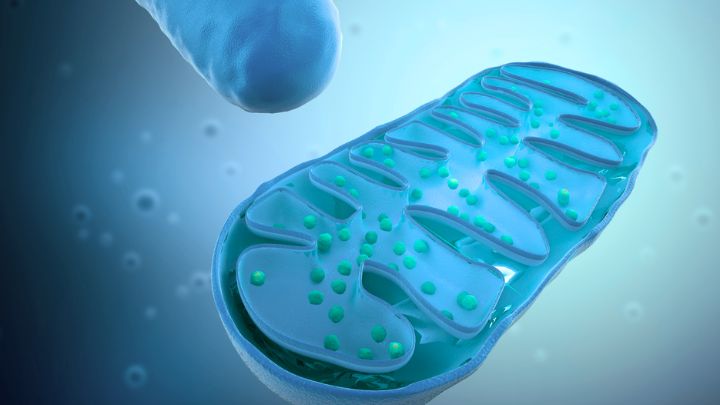You know that feeling when you wake up already exhausted? When your brain feels like it’s swimming through fog by 2pm? When exercise that used to energize you now just… doesn’t?
There’s a good chance your mitochondria are struggling.
Before you roll your eyes at another wellness buzzword, hear me out. This isn’t pseudoscience. Your mitochondria are the tiny powerhouses in almost every cell of your body, and when they start failing, you feel it everywhere.
In this article
What Actually Happens Inside Your Cells
Think of mitochondria as microscopic batteries. They take the food you eat and the oxygen you breathe and convert them into ATP, the energy molecule that powers literally everything your body does. Every thought, every heartbeat, every time your immune system fights off a virus.
But here’s what most articles don’t tell you: mitochondria do way more than just make energy.
They decide whether cells should live or die. They control inflammation. They talk directly to your DNA to turn genes on and off. They even influence your hormones.
When mitochondria work well, you have energy to spare. When they don’t, it’s not just fatigue. It’s brain fog, slower recovery, metabolic issues, and yes, faster aging.
Why Everything Starts Breaking Down
Your mitochondria don’t stay young forever. Over time, several things happen:
Their DNA gets damaged. Unlike the DNA in your cell nucleus, mitochondrial DNA doesn’t have great repair mechanisms. Mutations accumulate.
They produce more waste. Specifically, reactive oxygen species (ROS), which are basically exhaust fumes that damage surrounding structures.
Your body stops making new ones. The process of mitochondrial biogenesis slows down as you age.
The cleanup crew stops showing up. Mitophagy, the system that removes damaged mitochondria, becomes less efficient.
NAD+ levels crash. This is a critical molecule for mitochondrial function, and it can drop by 50% by the time you’re middle-aged.
The result? Cells that can’t keep up with your body’s demands. Energy production drops. Waste builds up. Cells either die or become senescent (basically, zombie cells that hang around causing inflammation).
This is why you can’t pull all-nighters like you used to. Why that injury takes longer to heal. Why your skin doesn’t bounce back the way it did.
The Foundation: Small Habits, Big Mitochondrial Impact
Move Your Body (Properly)
Exercise is probably the single most powerful intervention for mitochondrial health. It’s not optional.
When you do endurance training, your body creates more mitochondria. When you lift weights, it improves the quality of existing ones. Both activate PGC-1α, a master regulator that tells your cells “we need more energy capacity.”
You don’t need to become an athlete. Just aim for a mix of cardio and resistance training, 3-4 times a week. Your mitochondria will respond.
Give Your Body a Break from Food
Intermittent fasting isn’t just a weight loss trend. When you fast (even just a 12-14 hour overnight window), your body activates cleanup processes. Old, damaged mitochondria get recycled. NAD+ production increases. Insulin sensitivity improves.
You don’t need extreme protocols. Start simple: finish dinner by 7pm, don’t eat again until 7-9am.
Play with Temperature
This one sounds weird, but controlled stress from heat and cold makes mitochondria more resilient.
Cold showers or ice baths activate brown fat, which is packed with mitochondria. Sauna sessions trigger heat shock proteins that protect mitochondrial structures and help your body detoxify.
Start small. End your shower with 30 seconds of cold water. Work up from there.
Sleep Like Your Life Depends on It (Because It Does)
Mitochondria regenerate during deep sleep. Poor sleep fragments them and increases oxidative stress.
Get morning sunlight. It anchors your circadian rhythm. Avoid screens an hour before bed. Sleep 7-9 hours consistently. This isn’t negotiable if you want healthy mitochondria.
Eat Real Food
Your mitochondria need specific nutrients to function:
- Magnesium stabilizes ATP
- Iron, copper, and zinc are essential for the electron transport chain
- B vitamins support NAD+ synthesis
- Omega-3s keep mitochondrial membranes fluid
- Polyphenols (from colorful plants) reduce oxidative damage
Focus on whole foods. Lots of vegetables, quality protein, healthy fats. Skip the ultra-processed stuff.
Reduce Your Toxic Load
Mitochondria are vulnerable to environmental toxins: alcohol (even moderate amounts), heavy metals, cigarette smoke, rancid seed oils, pesticides.
You can’t avoid everything, but you can be thoughtful. Eat organic when it matters. Filter your water. Don’t cook with oxidized oils.
Stop Running on Stress
Chronic stress floods your body with cortisol, which impairs mitochondrial respiration and increases oxidative damage.
Find practices that actually work for you: breathwork, meditation, time in nature, real connection with people you care about. This isn’t woo-woo. Chronic stress will literally damage your mitochondria.
The NAD+ Problem (And Why It Matters So Much)
If mitochondria are engines, NAD+ is the oil that keeps them running smoothly.
NAD+ (nicotinamide adenine dinucleotide) is a coenzyme that exists in every cell. It does four critical things for mitochondria:
1. It drives ATP production. NAD+ carries electrons through the mitochondrial electron transport chain. No NAD+, no energy.
2. It activates sirtuins. These are longevity proteins (especially SIRT1 and SIRT3) that promote mitochondrial biogenesis, activate antioxidant systems, and improve efficiency. But they need NAD+ to function.
3. It powers DNA repair. Both nuclear and mitochondrial DNA rely on NAD+-dependent PARP enzymes for repair.
4. It supports mitophagy. The cleanup process that removes damaged mitochondria needs adequate NAD+ levels.
The problem? NAD+ levels decline dramatically with age. By midlife, you might have 50% less than you did in your twenties.
AVEA’s NMN: Direct NAD+ Support
NMN (nicotinamide mononucleotide) is one of the most direct precursors to NAD+. Unlike some other precursors, it’s efficiently absorbed and converted.
AVEA’s NMN at 250mg has been shown in human studies to:
- Increase NAD+ levels
- Activate sirtuins
- Improve insulin sensitivity
- Enhance mitochondrial function and physical performance
This isn’t magic. It’s giving your body the raw material it needs to produce something that’s naturally declining.

AVEA’s Booster: Protection and Optimisation
NMN is just part of the equation. AVEA’s Booster contains six ingredients that work synergistically to protect and enhance mitochondrial function:
Resveratrol (150mg)
Activates SIRT1 and PGC-1α (triggers new mitochondria). Reduces oxidative stress. Enhances energy output. This is the compound found in red wine, but you’d need to drink an absurd amount to get meaningful doses.
Ubiquinol (100mg)
The active, absorbable form of CoQ10. Essential for the electron transport chain and ATP production. It’s also a potent antioxidant that protects mitochondrial membranes. Particularly important for heart and muscle cells.
Pterostilbene (50mg)
A more bioavailable cousin of resveratrol (about 4x better absorbed). Activates SIRT1 and SIRT3. Protects mitochondrial DNA from oxidative damage.
Apigenin (50mg)
Here’s where it gets interesting. Apigenin inhibits CD38, an enzyme that consumes NAD+. So while NMN helps you make more NAD+, apigenin helps you keep it from being degraded. It also activates mitochondrial antioxidant systems.
Betaine (50mg)
Supports the methylation pathways needed for NAD+ synthesis. Reduces homocysteine (which is toxic to mitochondria). Influences mitochondrial gene expression.
Vitamin B3 (16mg)
Nicotinamide feeds directly into the NAD+ salvage pathway. It’s involved in over 400 enzymatic reactions and supports energy metabolism and DNA repair.
Why the Combination Works
Think of it this way: NMN gives you the raw material to make NAD+. Booster ensures that NAD+ is preserved, protected, and actually used efficiently.
Together, they:
- Increase NAD+ production
- Reduce NAD+ breakdown
- Activate mitochondrial renewal
- Support ATP production
- Strengthen antioxidant defenses
It’s a system, not just isolated supplements thrown together.
Real results: Increasing NAD+ levels with AVEA Vitality Bundle
What happens when you stop taking AVEA’s NMN and Booster and what changes when you start again?
AVEA’s CSO, Sophie Chabloz, put it to the test. After a month without supplementation, she resumed taking the Vitality Bundle and tracked her NAD+ levels for eight weeks using an at-home dried blood spot test to measure its impact on energy, immunity, and resilience.
Key results:
- Baseline (No supplementation): NAD+ levels at baseline were 15.4 µM, coinciding with lower energy, weaker immunity, and tired mornings.
- 250mg NMN + Booster (Weeks 1-4): NAD+ levels rose to 20.4 µM, energy improved, and waking up felt easier again.
- 500mg NMN + Booster (Weeks 5-8): with double dose of the Vitality Bundle, NAD+ peaked at 35.2 µM, leading to sharper focus, better recovery, and sustained resilience during high-demand periods.
Higher NAD+ levels correlated with noticeable improvements in energy, mental clarity, and immune support—validating the powerful effects of AVEA’s Vitality Bundle.

AVEA NMN and Booster (Vitality Bundle) Experience
After asking customers about the benefits they perceived after 3 months of taking the Vitality Bundle, the results speak for themselves.
After 12 weeks, out of 450 participants:
- 80% reported improved energy and focus.
- 76% noticed a boost in overall wellbeing.
- 77% experienced enhanced mood and emotional balance.
“I have been taking NMN for 3 weeks now and have to say that I definitely have more energy towards the end of the day and also sleep more deeply. I am curious and look forward to what will happen with longer use.” – Christiane L.
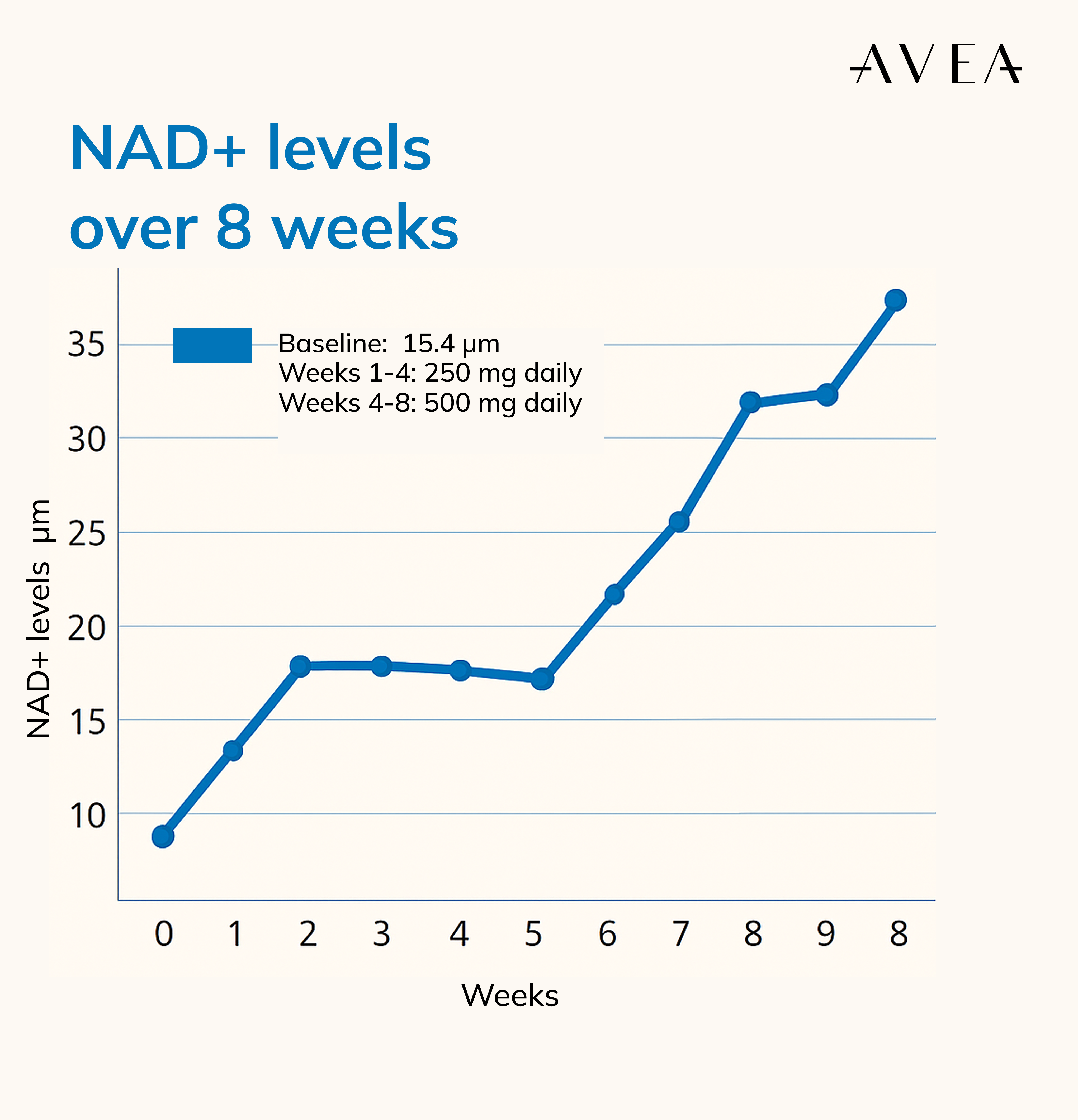
Find out more real experience with AVEA NMN and Booster (AVEA Vitality Bundle) here
The Bottom Line
Your energy, mental clarity, recovery, and how you age all come back to the same place: your mitochondria.
Start with the basics. Move consistently. Fast occasionally. Sleep well. Eat real food. Manage stress. Reduce toxins.
Then, if you want to take it further, layer in targeted support:
- AVEA NMN to restore NAD+ levels
- AVEA Booster to protect and enhance mitochondrial function
This isn’t about chasing some fantasy of eternal youth. It’s about maintaining the capacity to do the things that matter to you, for as long as possible.
Because when your mitochondria are healthy, everything else gets easier.
